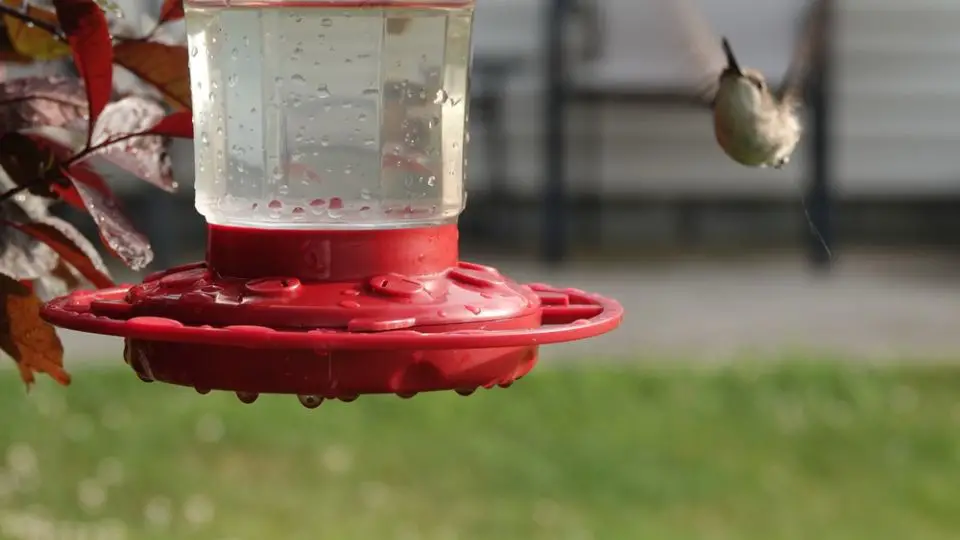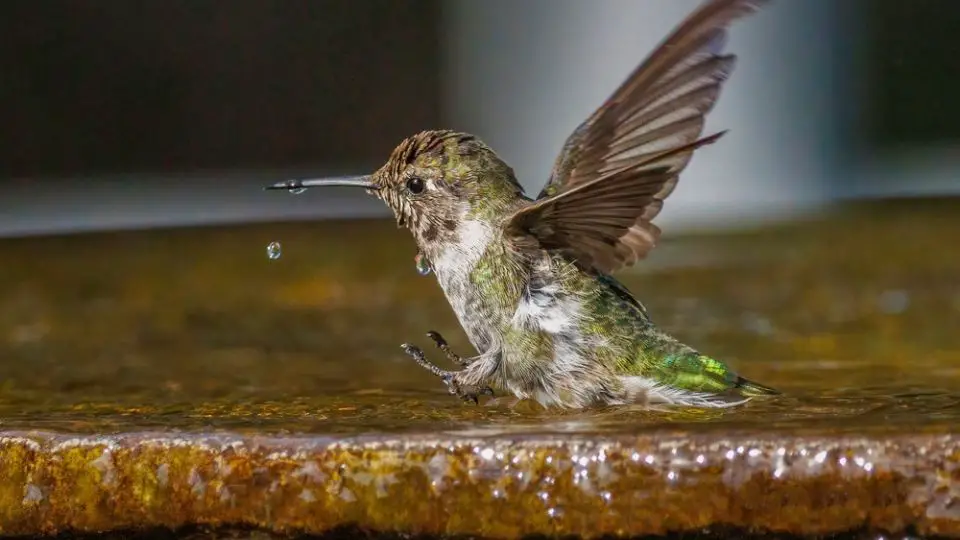Put out hummingbird feeders by early February. Georgia has 11 species of hummingbirds. Some spend the winter while others arrive for the spring and summer. The Ruby-throated Hummingbird lives in Georgia year-round.
From early March to mid-October, several different species frequent all areas of the state. Other species arrive from November to March, creating a second hummingbird season in Georgia. The Ruby-throated Hummingbird lives in Georgia year-round. Georgia has at least eleven species of hummingbirds visiting the state.
In this article, you’ll find more information about Georgia hummingbird migration, as well as which species of hummingbird you’re most likely to see. You’ll also learn how to attract hummingbirds with native plants or hummingbird feeders. Read on to learn about hummingbird migration in Georgia.
Table of Contents
When Do Migrating Hummingbirds Arrive In Georgia?
The first hummingbirds arrive in Georgia by late February or the first week of March. Early spring is a busy time, as hummingbirds migrate north during spring migration. Many of these birds migrate from Mexico or South America on their way to breeding grounds in North America, including Canada and Alaska.
Since Georgia is in the extreme southern US, many species of hummingbirds pass through after crossing the Gulf of Mexico early in the season. Some hummingbirds will continue migrating north of Georgia to escape the oppressive summer heat and humidity. Others remain for the season.
Georgia migrant hummingbirds include the Green Breasted Mango, the Mexican violet-ear, and the Magnificent Hummingbird. Sightings of these species are rare, as these birds usually make their home in Mexico or South America. As weather patterns change, hummingbird species may migrate to new areas.

What Month Should You Put Out Hummingbird Feeders In Georgia?
Hang hummingbird feeders by February. Put feeders out a couple of weeks before you usually see hummingbirds in your area. Migrant hummingbirds are hard to spot and may be around even though you don’t see them. Hanging feeders before you expect hummingbirds ensures all migrants have food sources as they fly north.
Male hummingbirds choose their territories based partly on the availability of food sources. Female hummingbirds also need plenty of food for raising their young, so they select nesting grounds based on the available food. Fill feeders with hummingbird nectar and put them up a week or two before hummingbirds are seen in your area.
The Ruby-throated Hummingbird
This species is the only hummingbird that lives in Georgia year-round. Some Ruby-throated stay in Georgia, while others migrate north or south for the season. No matter the time of year, birdwatchers report Ruby-throated Hummingbirds throughout the state.
The Ruby-throated is the only species of hummingbird that breeds in the eastern United States. The species gets its actual name from the males’ red throat color. Along with their ruby-red throat patch, males have shiny green back feathers and a white breast. Females don’t have the red throat and are a muted green on top and grayish white underneath.
When Do Hummingbirds Leave Georgia?
Migrant hummingbirds leave Georgia by mid-October. Some hummingbirds fly to Mexico or Central America for the winter. Others spend winter in warmer states, Texas, Florida, California, or Arizona. Hummingbirds follow the same migration route year after year, so they usually return to the same places.
Georgia has several species of wintering hummingbirds. These include the Rufous Hummingbird, Buff-bellied Hummingbird, Allen’s Hummingbird, and the Broad-tailed Hummingbird. These species are seen between November and mid-March. The Ruby-throated Hummingbird, however, stays year-round.
Hummingbird Species That Overwinter
- Allen’s Hummingbird
- Males have a copper tail, belly, and eye patch with a deep orange throat
- Broad-tailed Hummingbird
- Males have a magenta throat, with bright green top feathers and a white underbelly
- Buff-bellied Hummingbird
- Has a light orange underbelly and a red bill with a blueish green throat and breast
- Rufous Hummingbird
- Recognized by his reddish-orange coat
Should Georgia Residents Put Out A Hummingbird Feeder In The Winter?
Georgia residents can put out a
In addition to hummingbird feeders, consider attracting hummingbirds by adding flowers that bloom throughout the year. Petunias, mums, or honeysuckle vines provide nectar for hummingbirds. Generally, hummingbirds are drawn to red plants with tubular flowers. Most species, however, will feed from any flower they deem tasty.

Rare Species In Georgia
- Anna’s Hummingbird
- Ranges on the Pacific Coast, including California and Oregon
- Black-chinned Hummingbird
- Typically found in the western US, including Texas, New Mexico, Arizona, Idaho, Utah, and Montana
- Calliope Hummingbird
- Found in the Pacific Northwest
- Green Breasted Mango
- Ranges from South America to Mexico
- Magnificent Hummingbird
- Breed in the mountains of the southwestern US, winters in Panama and Mexico
- Mexican violetear
- Ranges from Mexico to Nicaragua
What Should I Put In My Hummingbird Feeder ?
Keeping feeders filled with fresh sugar water ensures these hummingbirds always have access to food. Make your own hummingbird nectar by boiling 4 cups of water. Add 1 cup white sugar and stir to dissolve, letting the solution boil for 2 more minutes. Let cool before feeding hummingbirds.
Don’t add honey or artificial sweeteners. These substances can harm hummingbirds and make them sick. Red dye isn’t necessary, either. Keep feeders clean and free of bugs. Wasps can deter hummingbirds from feeding, so it’s crucial to monitor feeders and address any issues.

